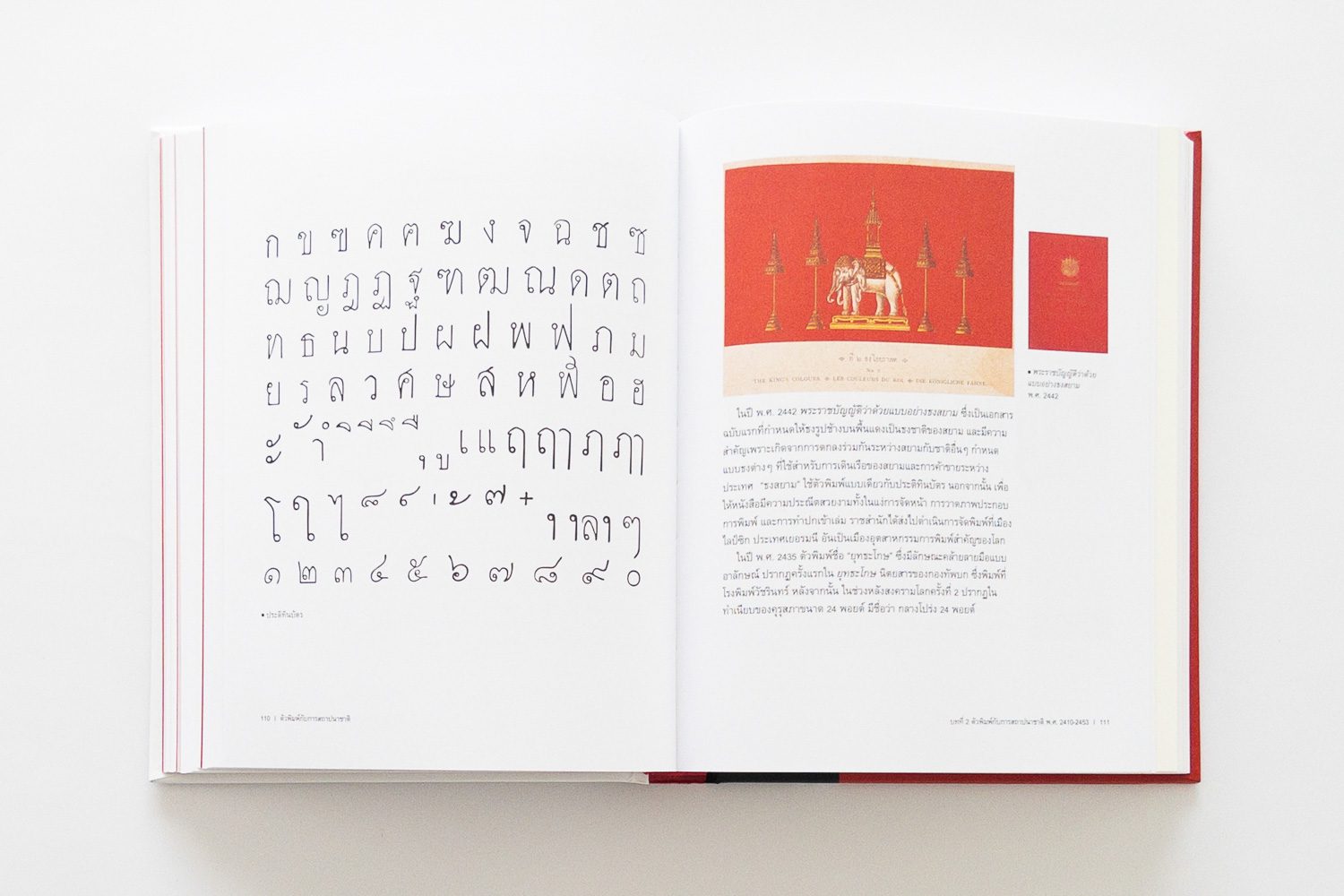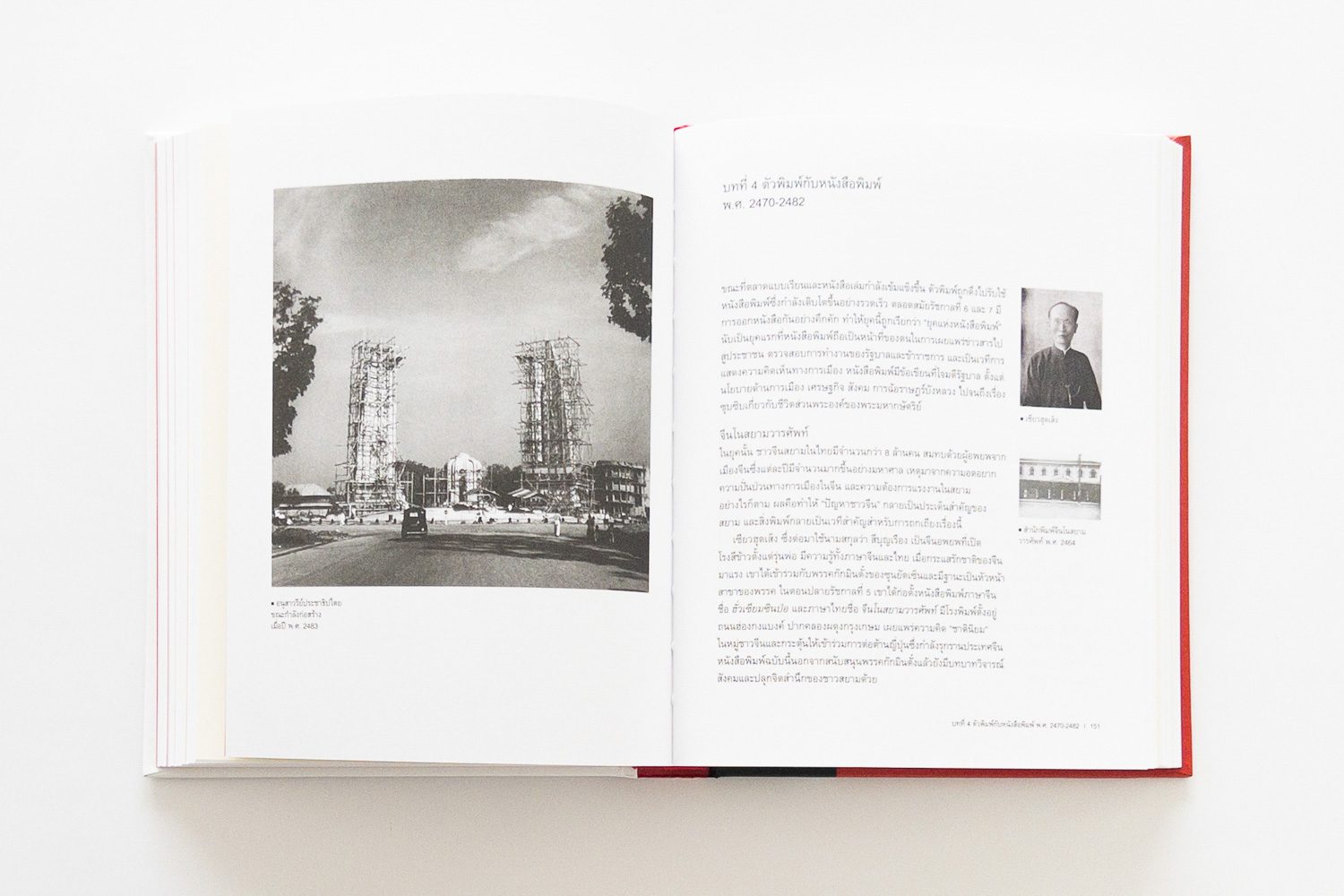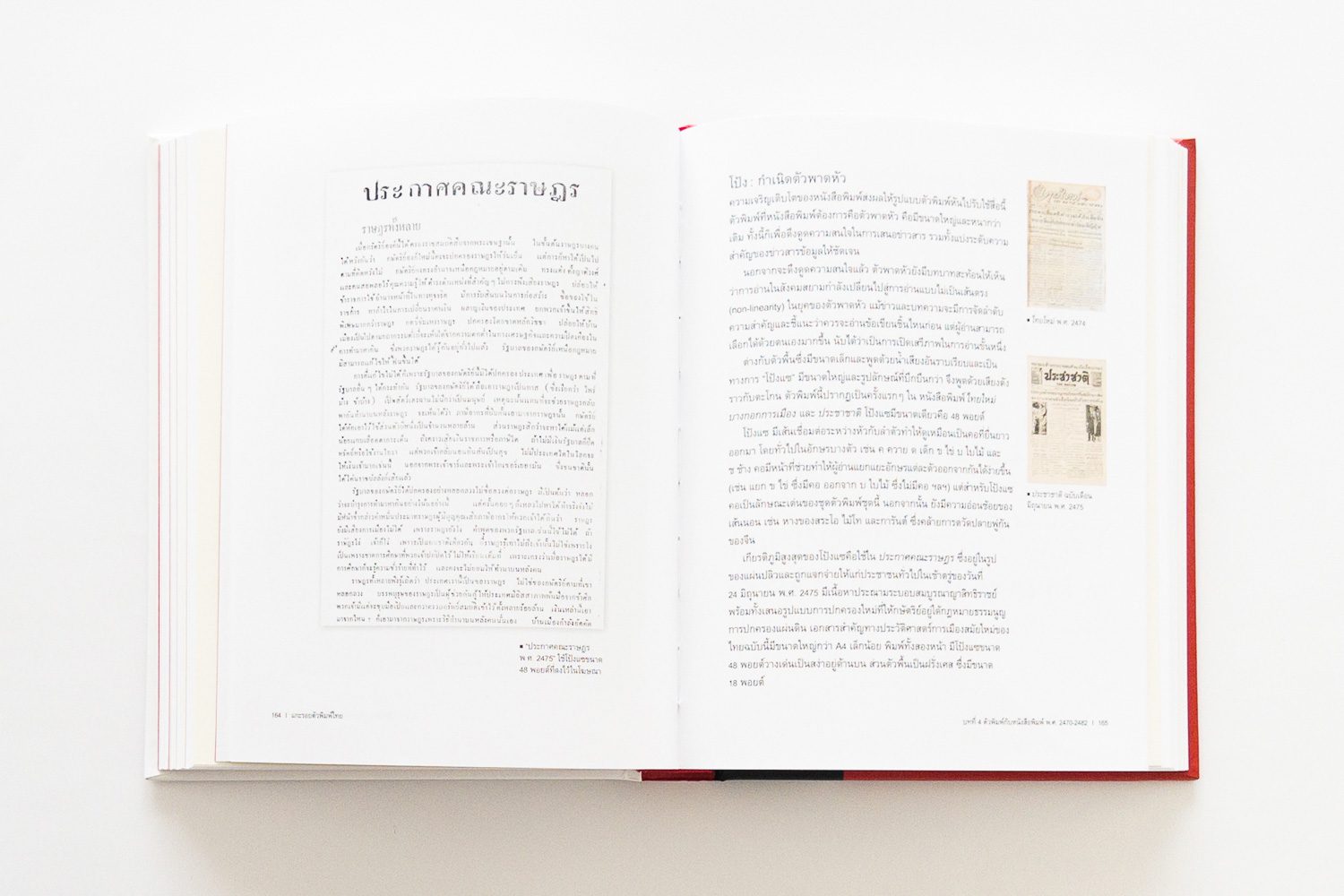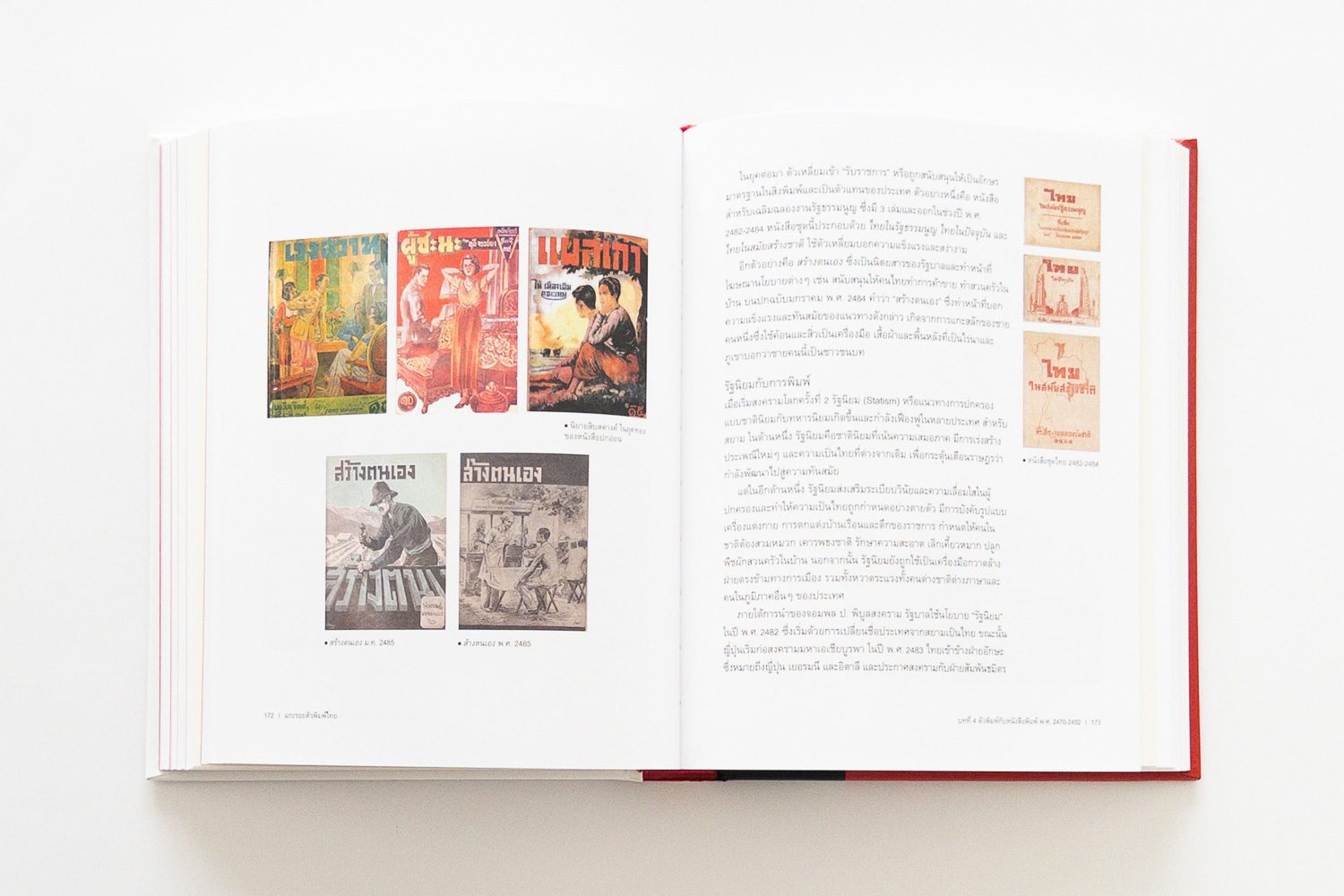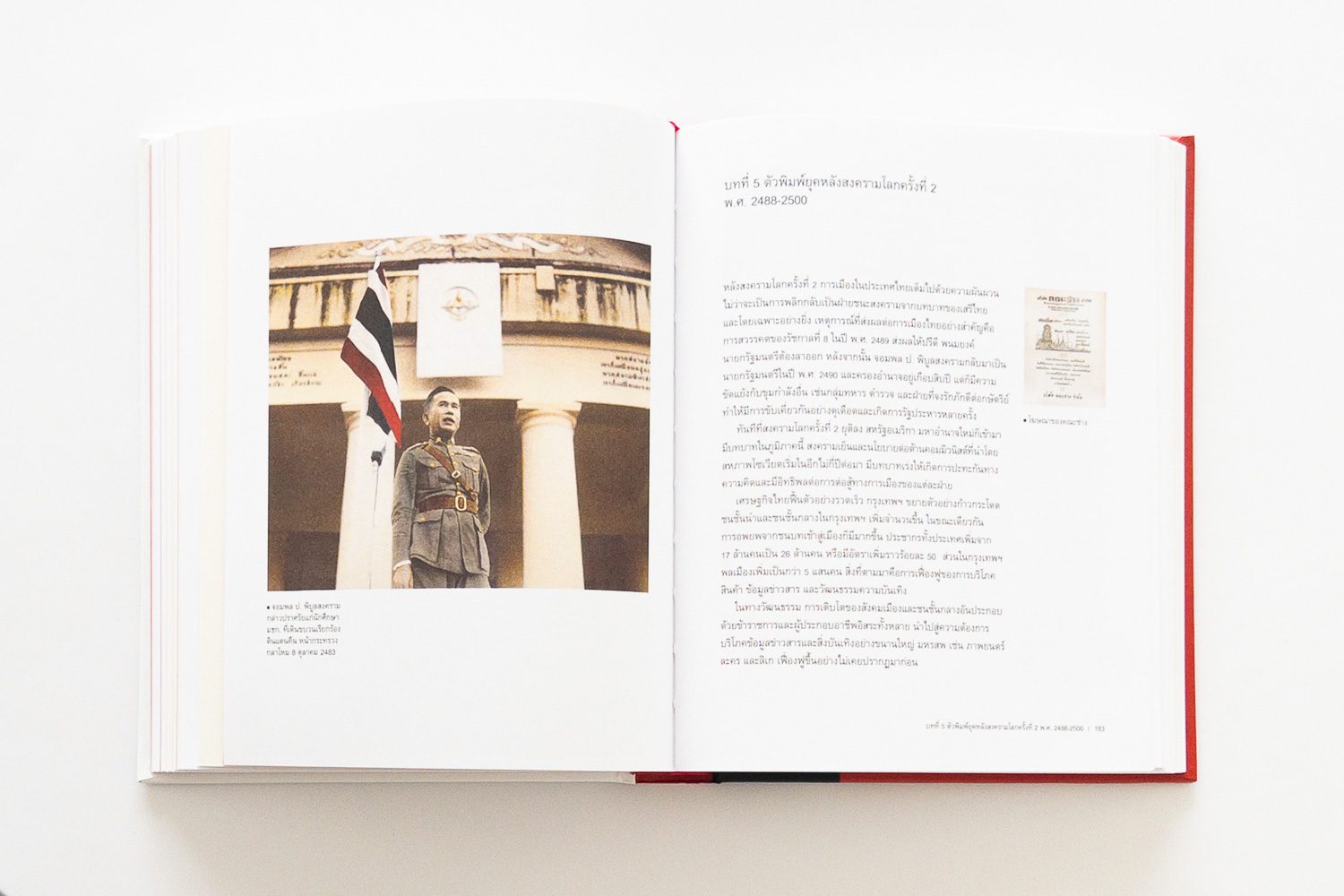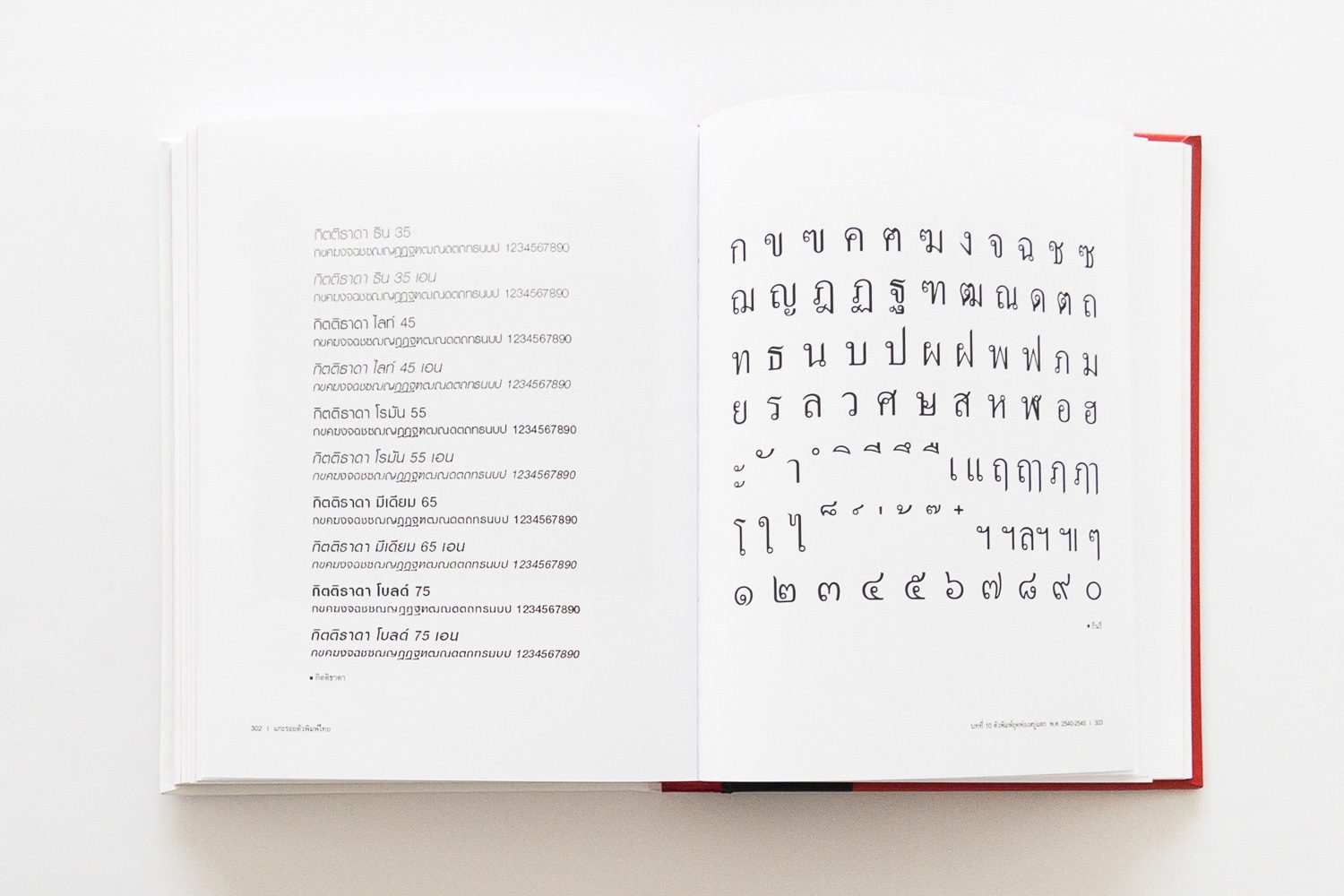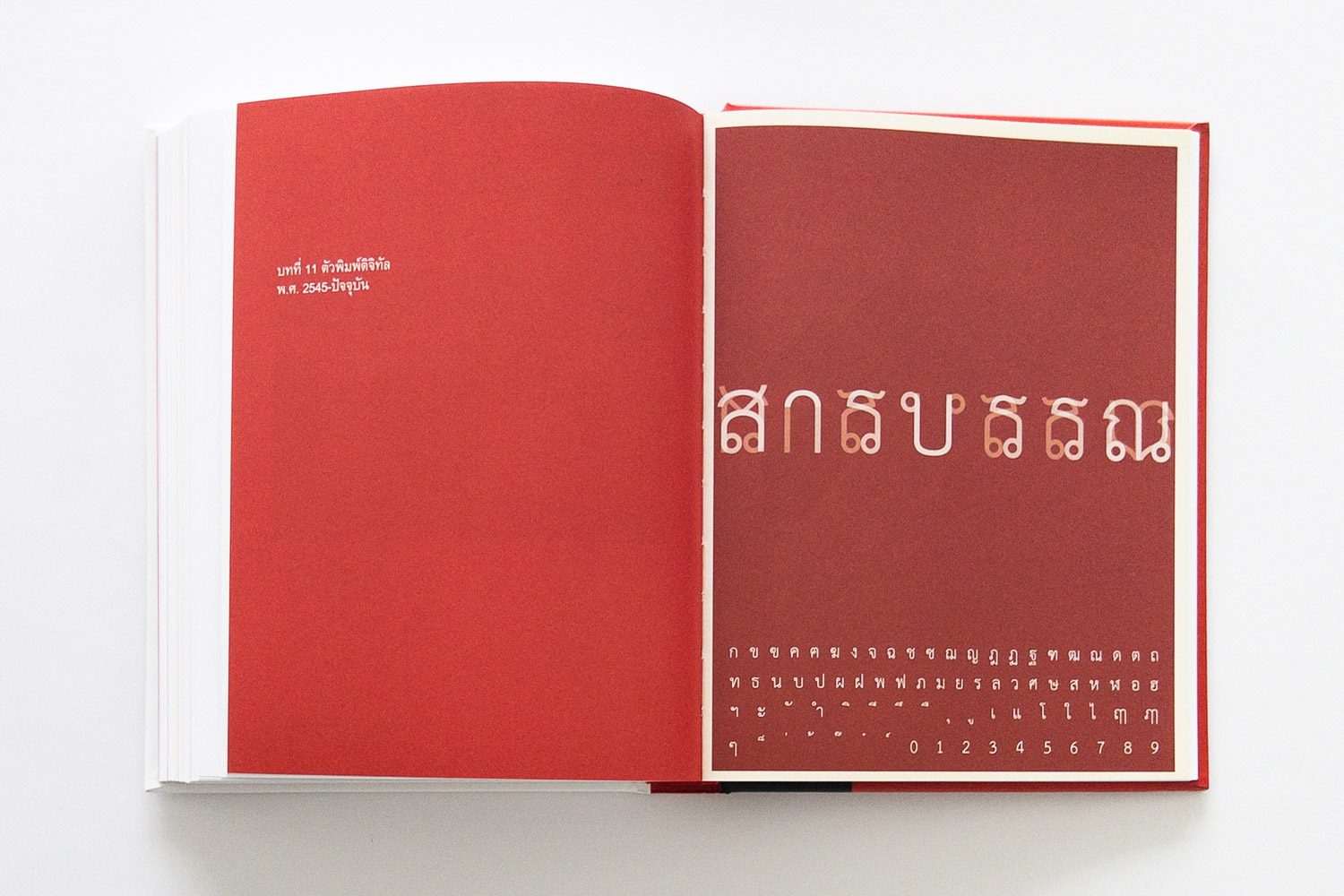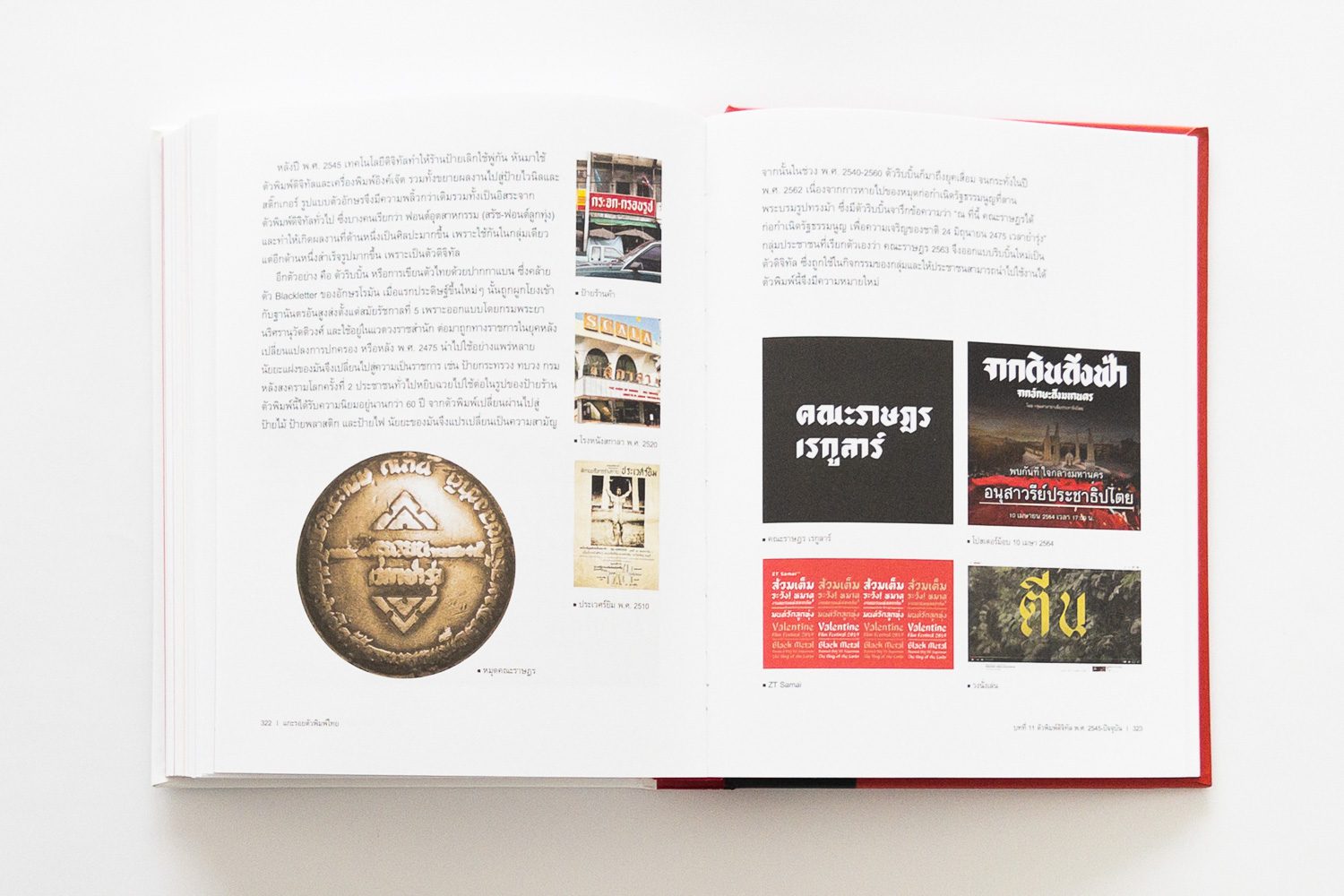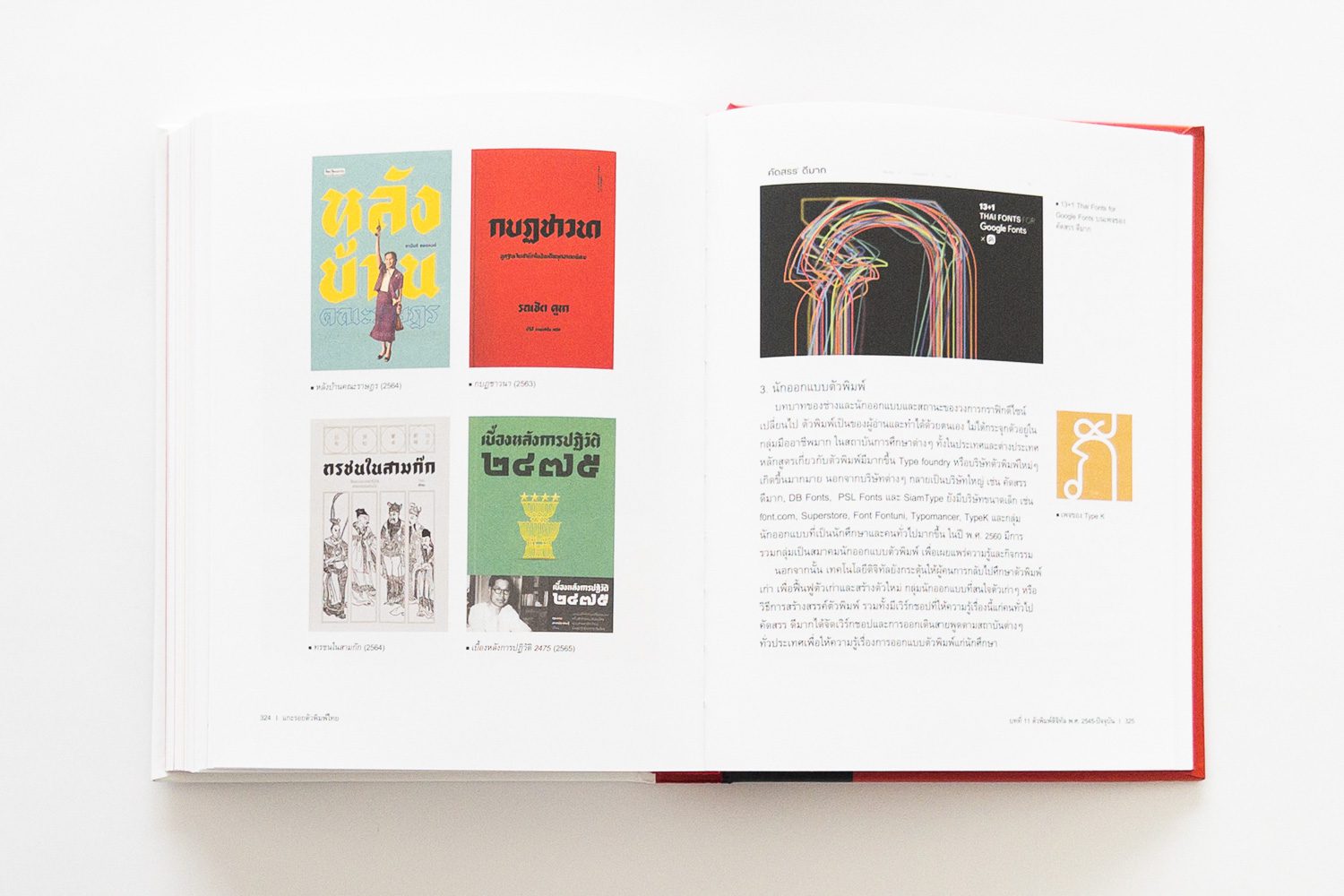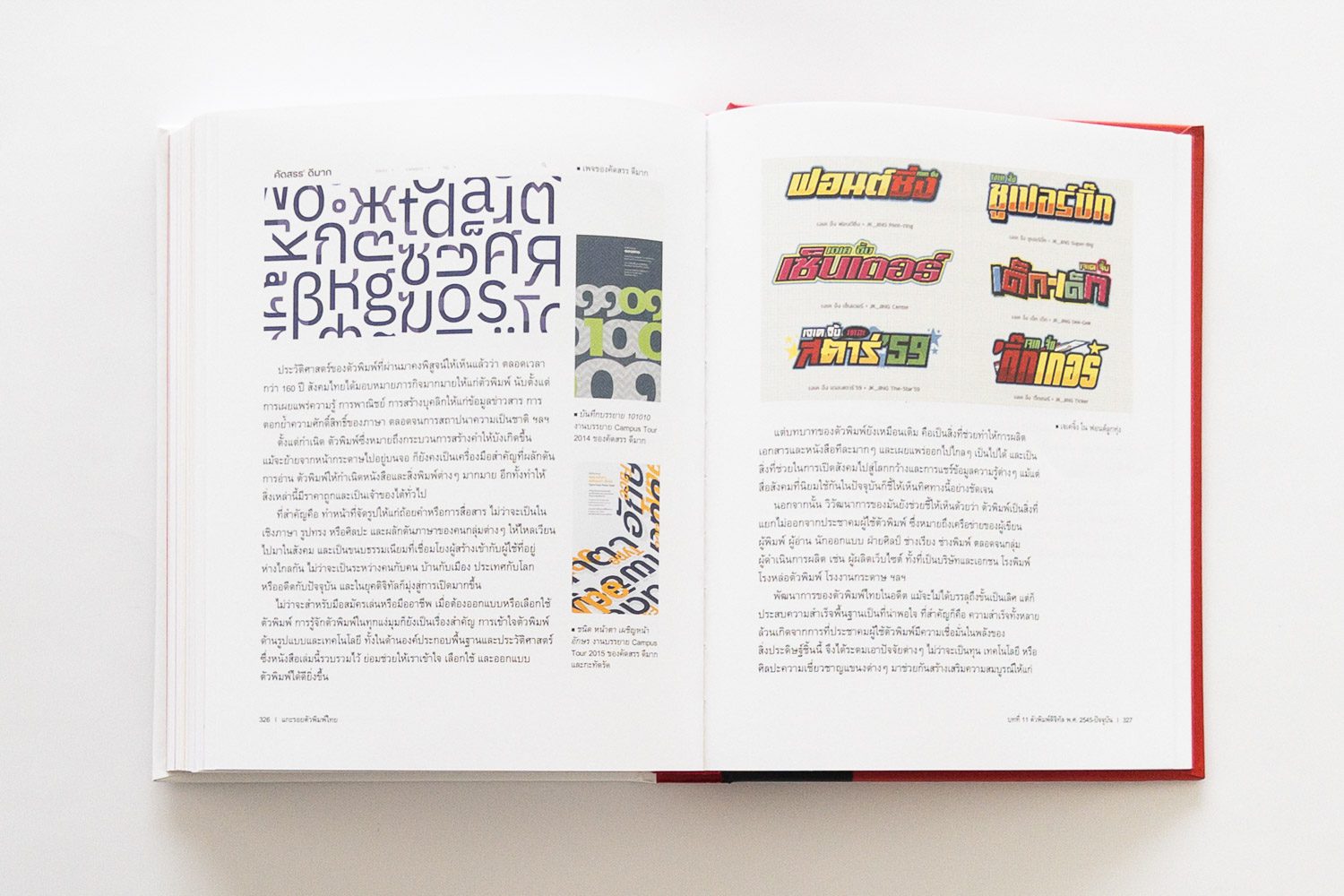DELVE INTO THE HISTORY OF FONTS AND TYPOGRAPHY IN THAILAND IN A BOOK BY PRACHA SUVEERANONT PRESENTING THE INTRICATE RELATIONSHIP BETWEEN TYPOGRAPHY AND THE SHIFTS IN THAILAND’S SOCIAL LANDSCAPE
TEXT: WEE VIRAPORN
PHOTO: KETSIREE WONGWAN
(For Thai, press here)
History of Thai Type
Pracha Suveeranont
Same Sky Books, 2024
Hardcover
16.4 x 23.9 cm
360 pages
ISBN 978-616-943-033-9
In this day and age, even small business enterprises are realizing the critical importance of brand development. Fonts and typography stand out among the essential tools for this process, as they play a pivotal role in shaping distinctive brand identities across various sectors such as products, services, and organizational entities. Thailand’s vibrant design scene boasts a diverse array of font artisans, ranging from people who design fonts as a hobby to studios and companies producing fonts to international standards. The proliferation of online platforms has further facilitated convenient access to fonts like never before. Multinational brands venturing into the Thai market prioritize the creation of bespoke fonts tailored to resonate with local linguistic nuances. Thai designers have been commissioned to craft titles for foreign films and series using Thai script. Moreover, Bangkok hosts annual international academic conferences that delve deep into the realms of font and typography.
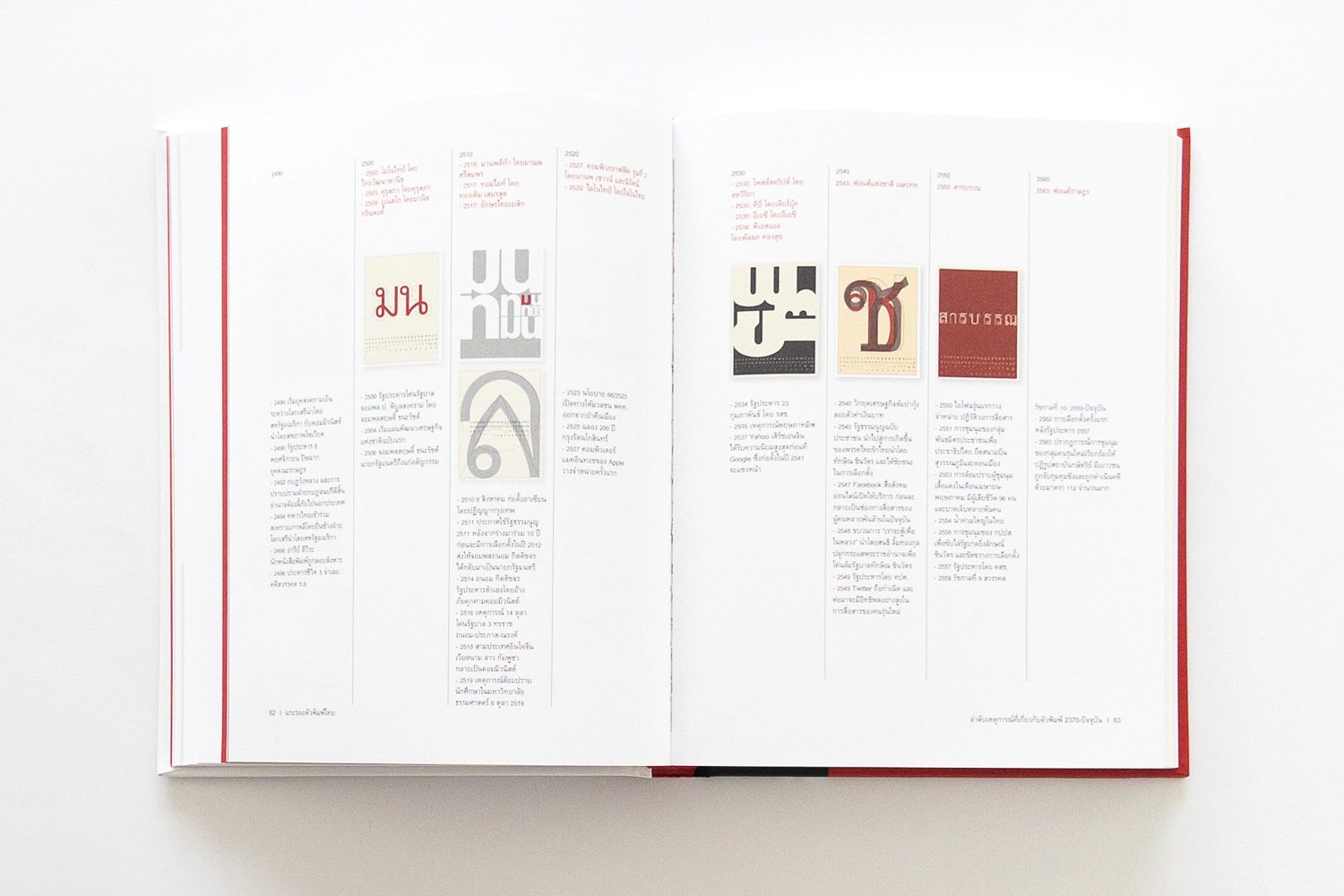
However, despite Thai children being raised with a strong sense of pride in having their own language, alphabet, and cultural heritage, their understanding of typography design and the history of Thai script remains relatively limited beyond the familiar narrative of King Ramkhamhaeng’s invention of the Thai alphabets in 1826. This knowledge gap was even more pronounced about 20 years ago when the intricacies of typography seemed like an esoteric subject. Therefore, the publication of the article ’10 Faces of Thai Type and Thai Nation’ in the Sarakadee Journal in September 2002 marked a significant milestone in establishing a foundation for this field of knowledge in Thailand. Following the article, an exhibition of the same name was held at the Chamchuri Art Gallery. Its accompanying exhibition pamphlet has become a highly coveted item among Thai designers who are passionate about this field and eager to acquire one in their possession.


Twenty-two years have passed since the first publication of the aforementioned article, and its content is now easily accessible online. Subsequently, Same Sky Books republished Pracha Suveeranont’s book, ‘History of Thai Type‘. In his work, Suveeranont delves into the intricate relationship between typography and printing technology, tracing their evolution alongside the shifts in Thailand’s economic and social landscape. Suveeranont’s scholarly exploration led to the establishment of type classification theory, which remains widely accepted and frequently cited even to this day.

Those acquainted with Pracha’s writing in the ‘Design + Culture’ series will thoroughly enjoy reading this book. The storytelling method effectively contextualizes design works, particularly through case studies and various examples, all of which are drawn from events in Thai history. This enhances the reader’s sense of connection to typography design, providing insights beyond their previous understanding. The contents have been improved and updated for the new edition, with additional illustrations showcasing examples of font usage attained through the author’s extensive research and meticulous selection. In the final two chapters, titled ‘Economic Bubble Era Fonts, 1997 – 2002’ and ‘Digital Fonts, 2002–Present,’ the comprehensive influences and transition from the past to the present are captured. They document events that raised awareness about copyright issues concerning fonts in Thai society, as well as technological changes impacting the functional demands of fonts. The book also discusses the government’s efforts to address font design standards through development projects and competitions, leading to the creation of the ‘National Fonts’ series, which is now almost forgotten. Additionally, it touches upon the resurgence of activist fonts such as the Ratsadon Font, which emerged as a distinctive communication design tool during the 2020 pro-democracy protests.
From the perspective of a graphic designer whose college years took place at the same time as the Tom Yum Kung Crisis and who drew significant inspiration from ’10 Faces of Thai Type and Thai Nation’ in the early stages of my career, this new edition marks a pivotal moment in Thailand’s contemporary graphic design history. It’s one of those design-related books that even those not directly involved in the field should read. Even if typography isn’t your primary focus, the book offers a foundational understanding of the field and its societal context, shedding light on the origins and evolution of design practices within our society. Moreover, you may uncover ways to apply these newfound insights to other design-related works and contexts.



